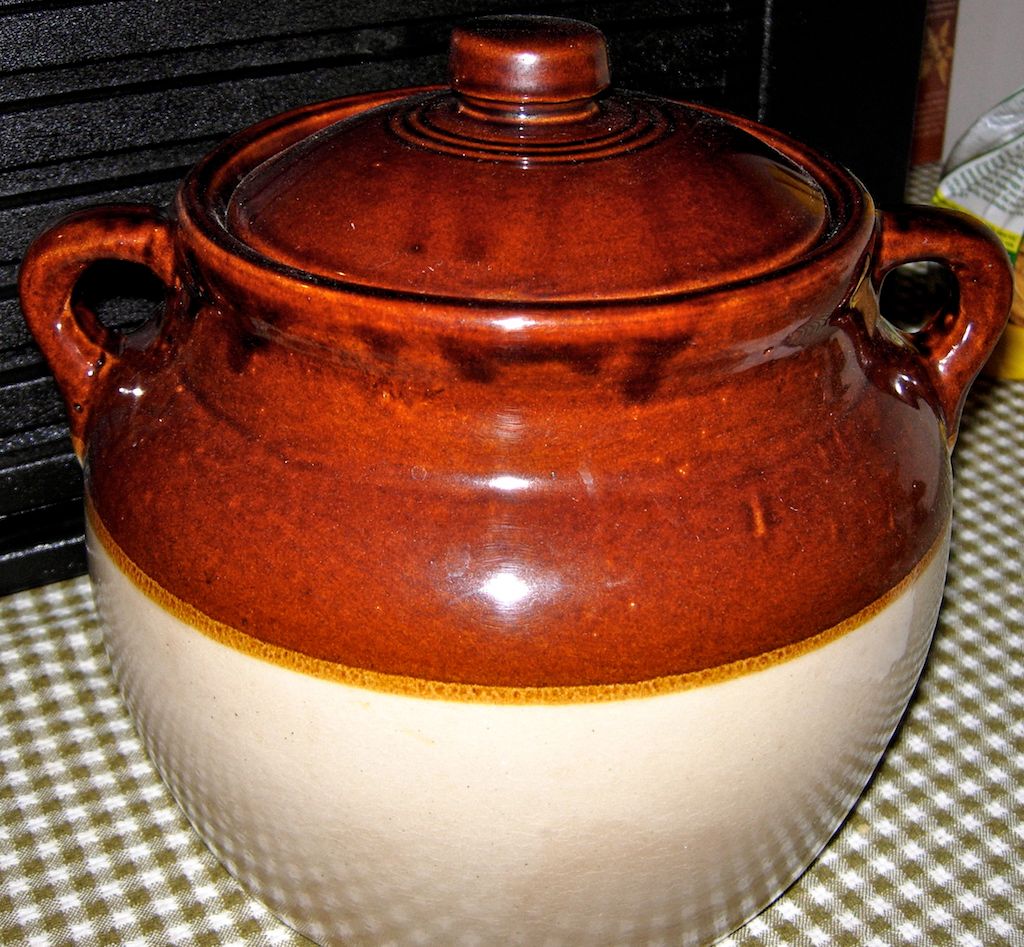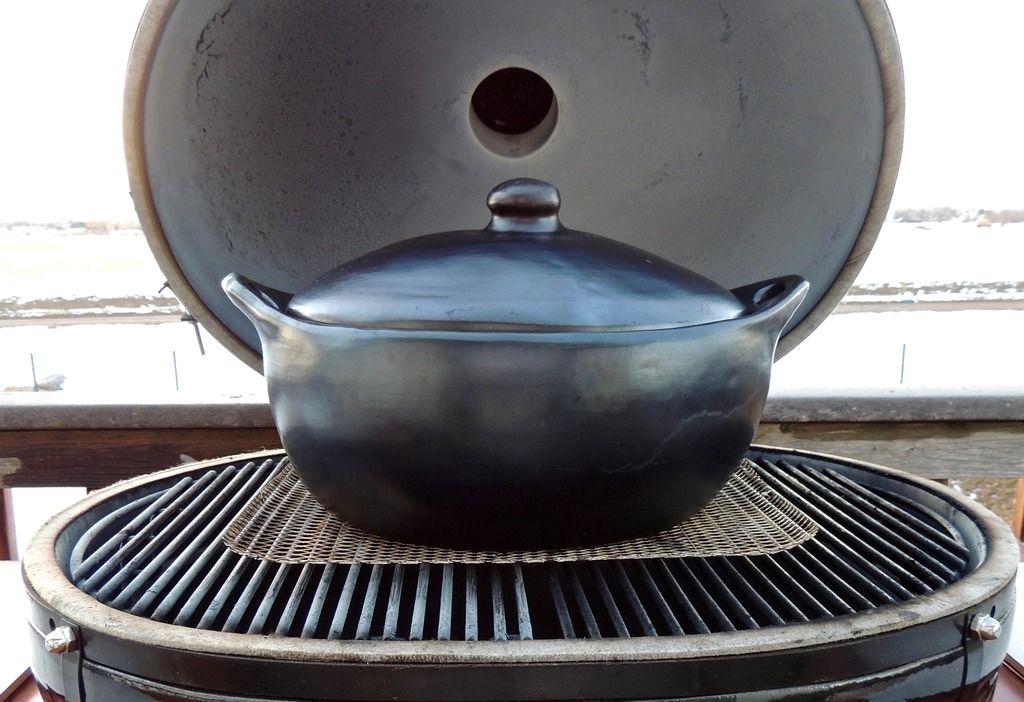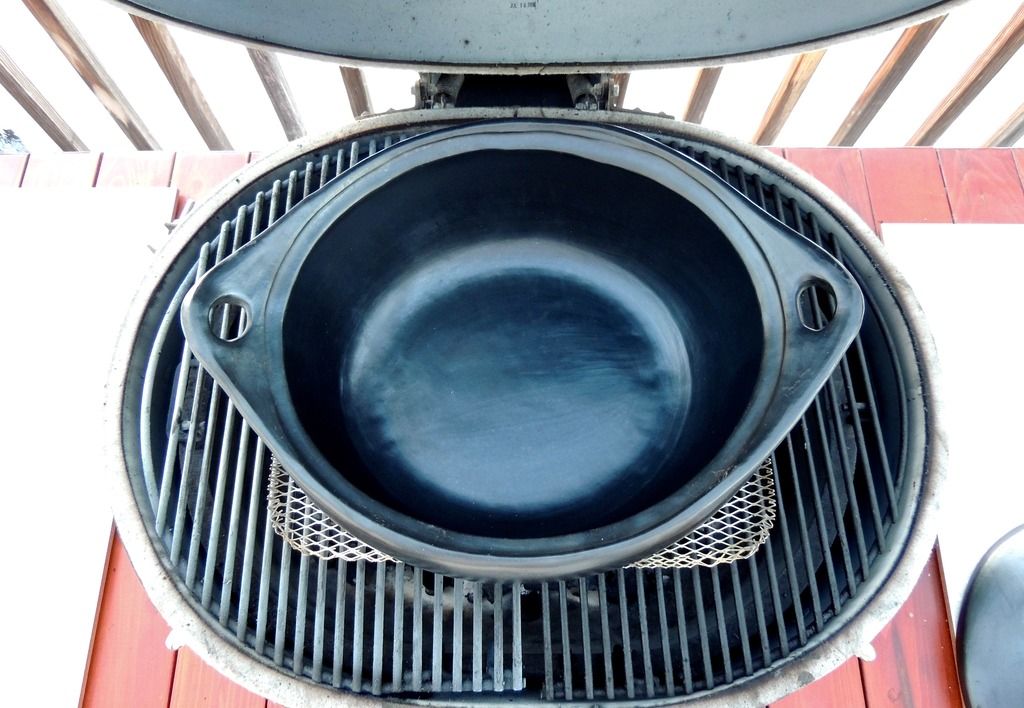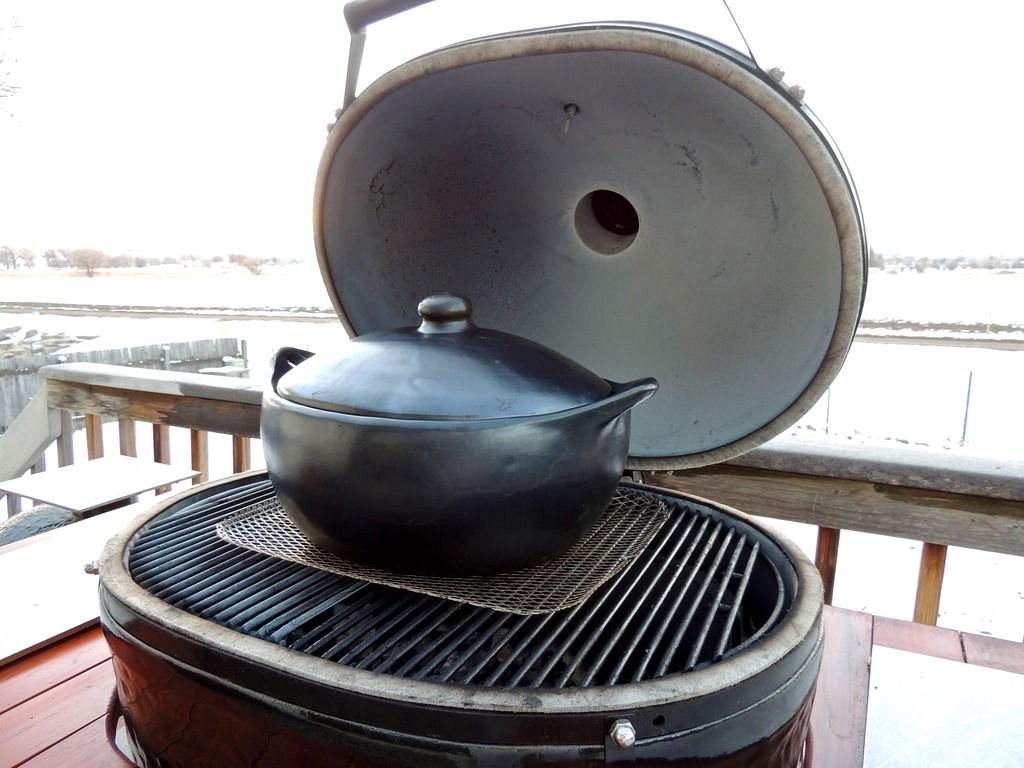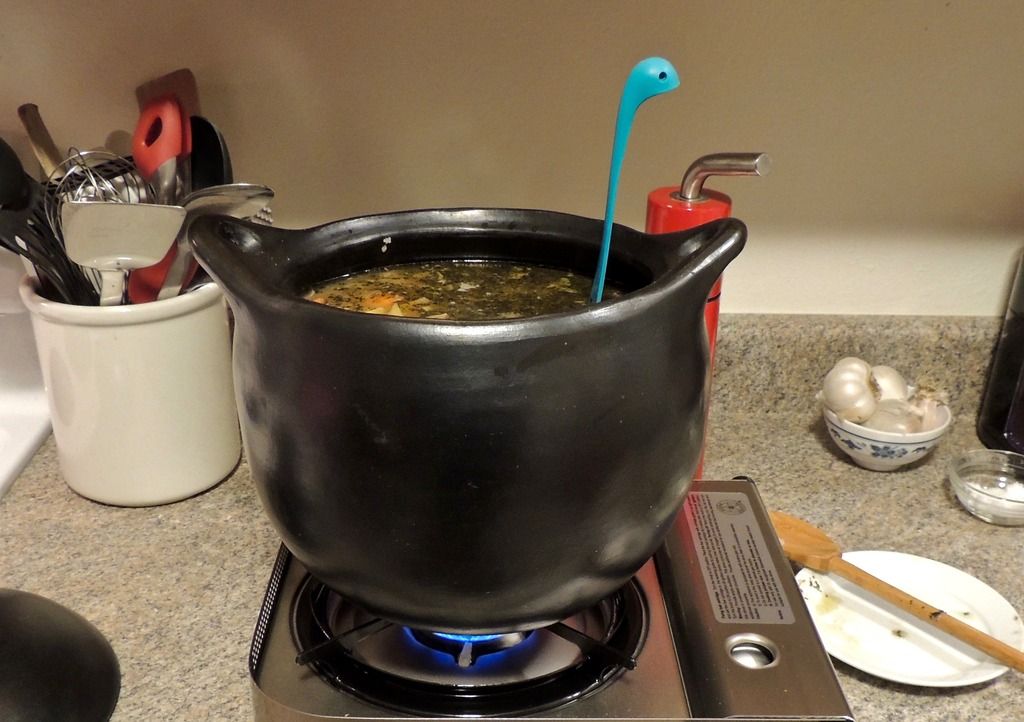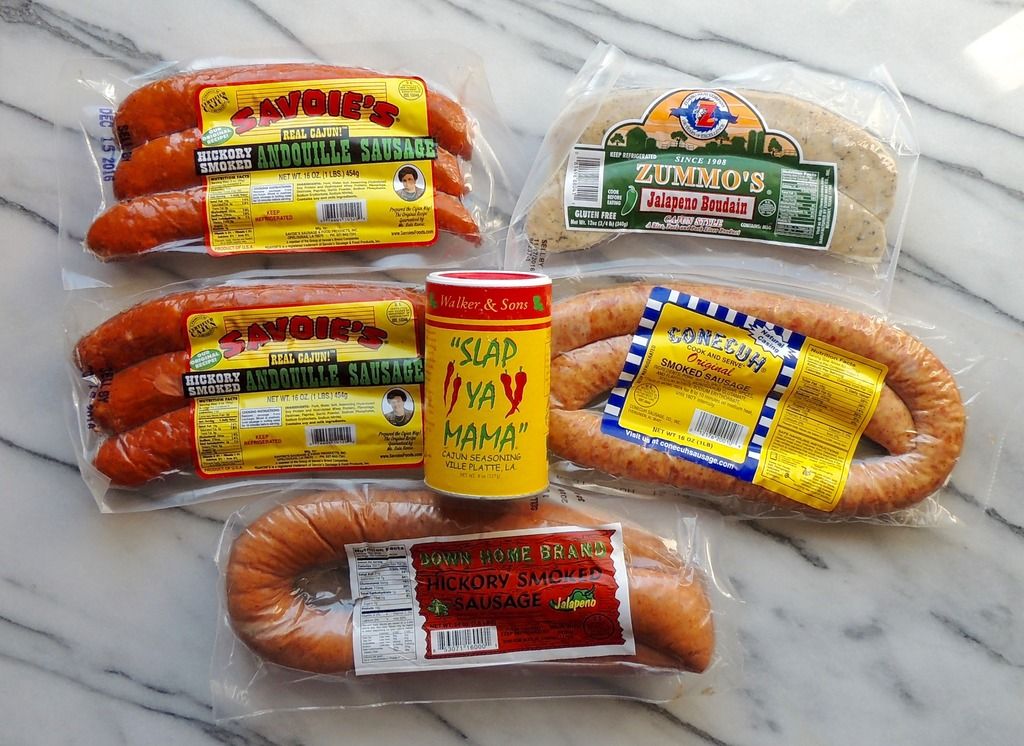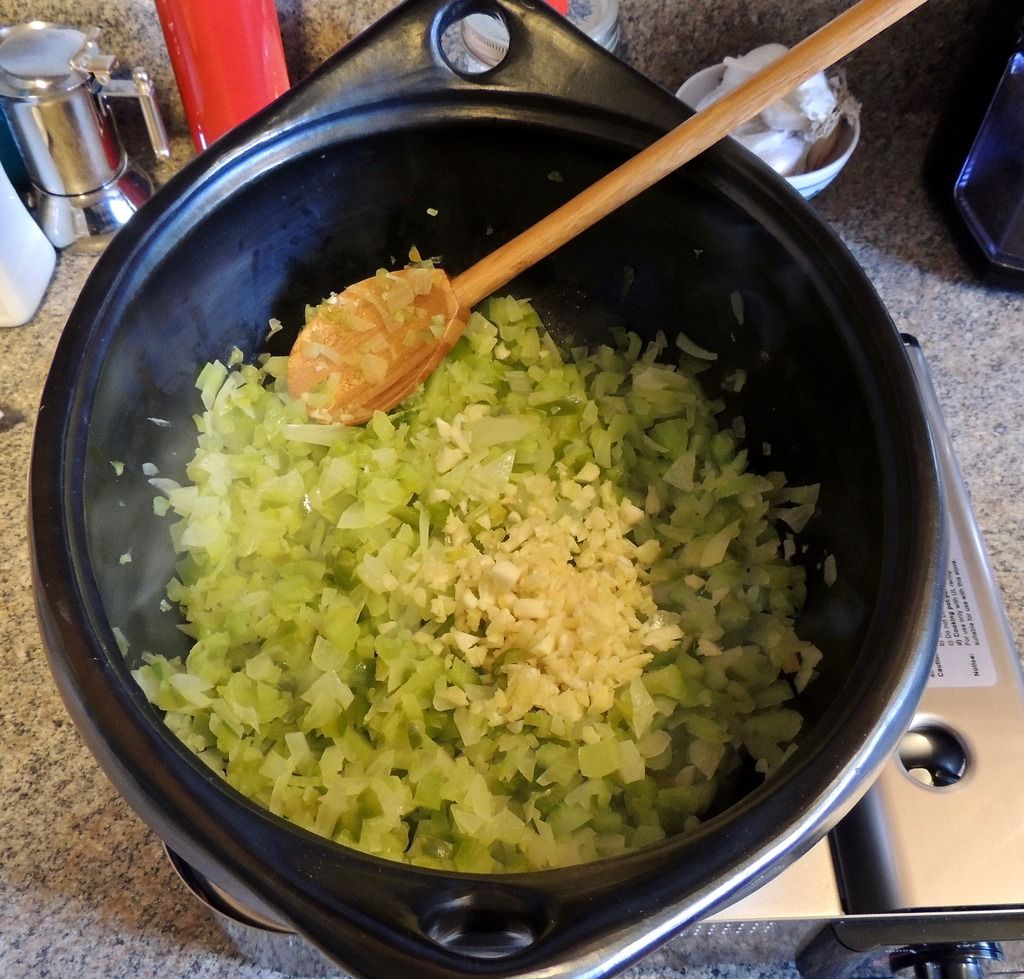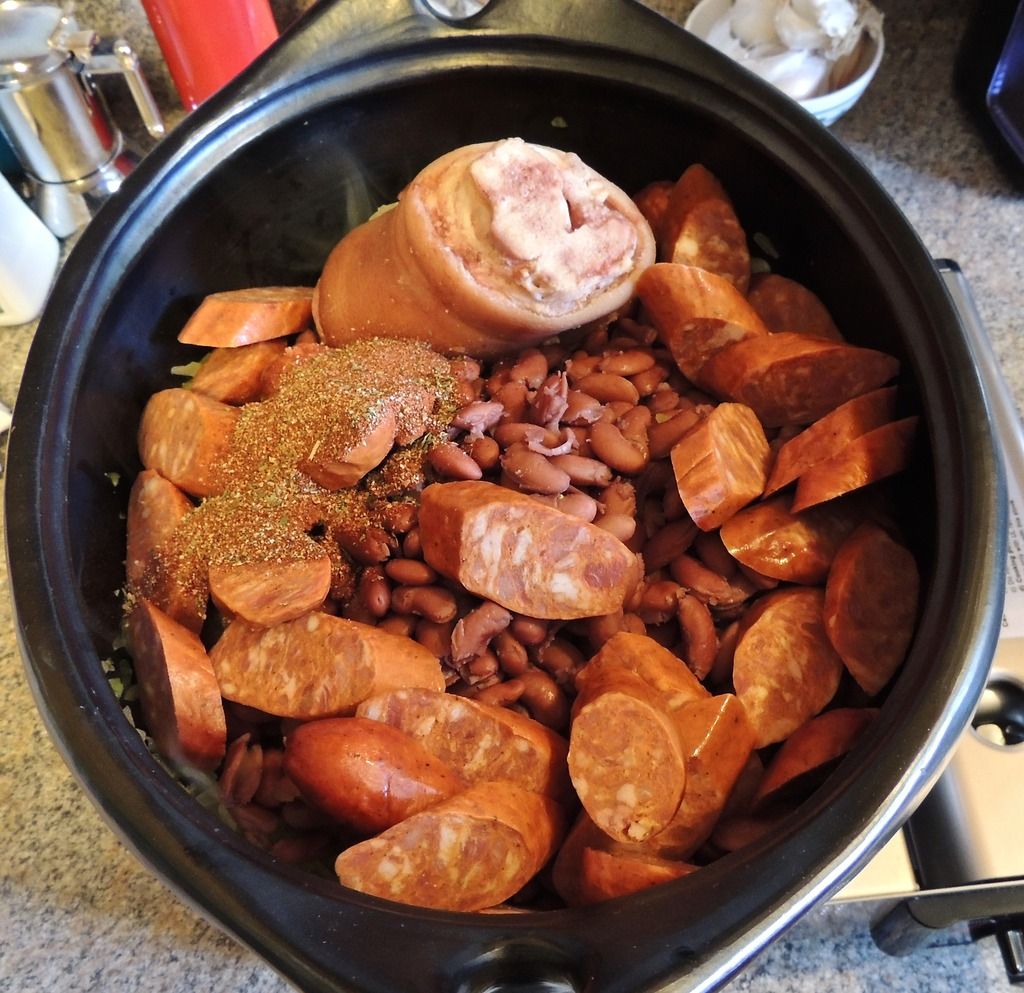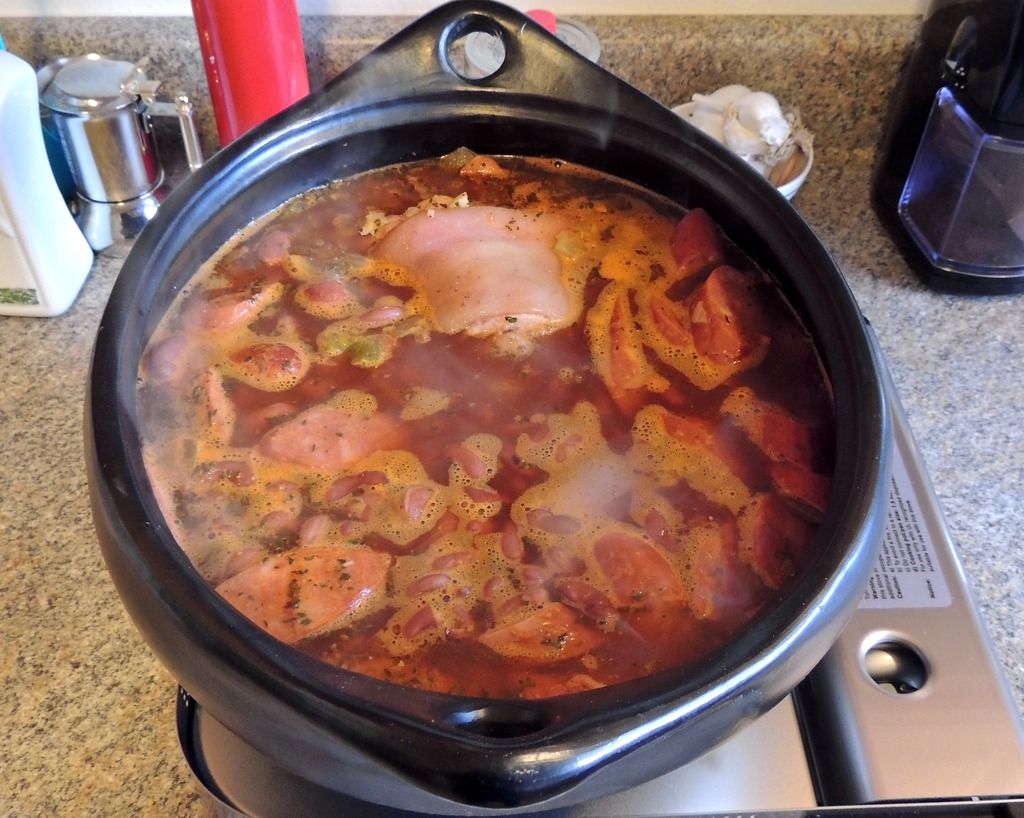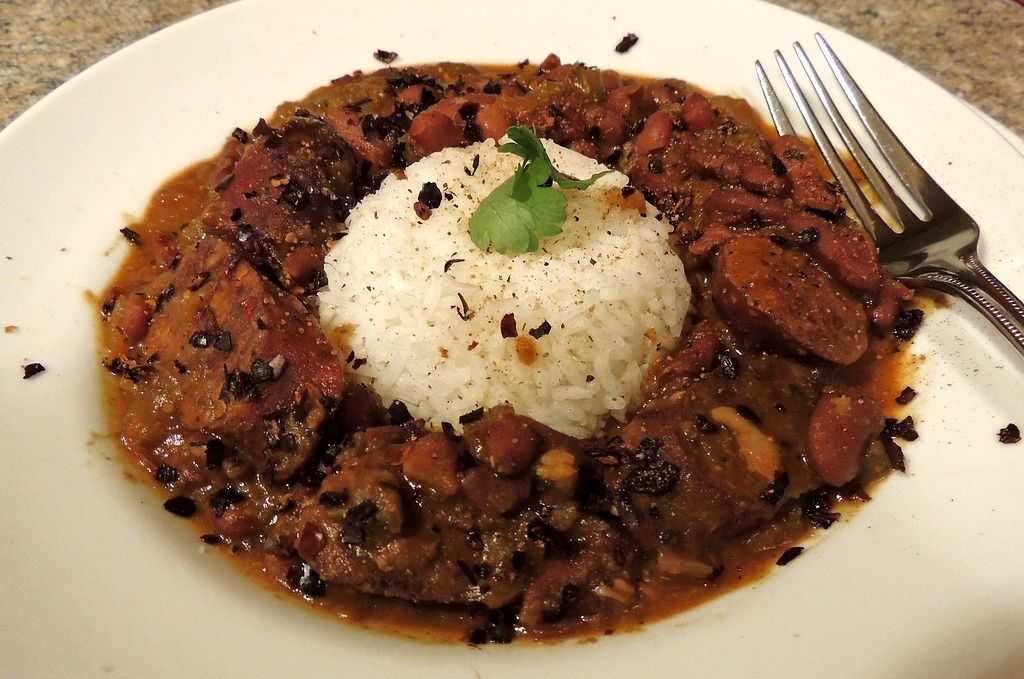Post by gracoman on Nov 20, 2016 10:48:46 GMT -5
Cooking with clay is not new to me. My family has been preparing baked beans in clay bean pots for generations.
This is the 40+ year old pot that still sees a lot of use.
Watching the many mesmerizing cooking videos on the Almazan Kitchen YouTube channel really got me going on clay cookware so I began searching for a Zlakusa clay pot to explore the possibilities with. Well, that just isn’t going to happen. They aren't for sale anywhere that I could find so the search was on.
Every culture has a take on clay cookware. Clay cookware is universal, highly regarded and extensively used just about everywhere. There are different categories. Clay mixed with stone can withstand very high temperatures and is used for cooking directly on fire or hot coals as well as used like a cast iron camping dutch oven with coals placed above and below the pot as seen in the video above. It is the unglazed cookware that has captured my attention. Unglazed and capable of withstanding direct heat.
Clay cookware loves fire. It is born of fire. Fire just happens to be my heat source of choice. Down the hole I go.
I looked at quite a few different unglazed clay pots before settling on La Chamba. A beautiful, functional and strong line of unglazed clay cookware made in small villages by the indigenous artisans of Columbia using techniques passed down through generations for over 700 years. The clay is rich in mica, the stone that gives this particular line its strength.
How La Chamba is made
Clay cookware must be seasoned. Seasoning clay is not the same as seasoning cast iron or carbon steel. Seasoning clay is about reintroducing moisture back into to the clay after the firing and sealing it. La Chamba is of such high quality seasoning is not much more than just filling it ¾ full with water and bringing the temp up to 400ºF for 30 minutes. There are other methods but mine was sealed with just water.
My first La Chamba pot was an oval. An oval for my oval. The shine is not glaze but produced by burnishing a fine terra cotta coating before firing. Vegetation is added after pulling the firing drums from the kiln which produces the black color. These pieces are absolutely gorgeous and have much in common with the ceramic cooker they will play in. The clay holds heat so well the contents will continue to boil for several minutes after removal from the heat source.
Supposedly a slight smokey flavor is added to foods cooked in Chamba but I have only cooked a pre-smoked pot roast in my oval pot which would effectively mask any other smoke flavor that may or may not have been added.
“Since the discovery of fire we have been cooking, braising , searing, roasting and barbecuing. Taste has long convinced humanity that preparing a dish in clay outperforms in aromas and taste.” - Margie Cintrano Food Editor Guidepost Magazine
My first La Chamba pot. A 5 qt oval.
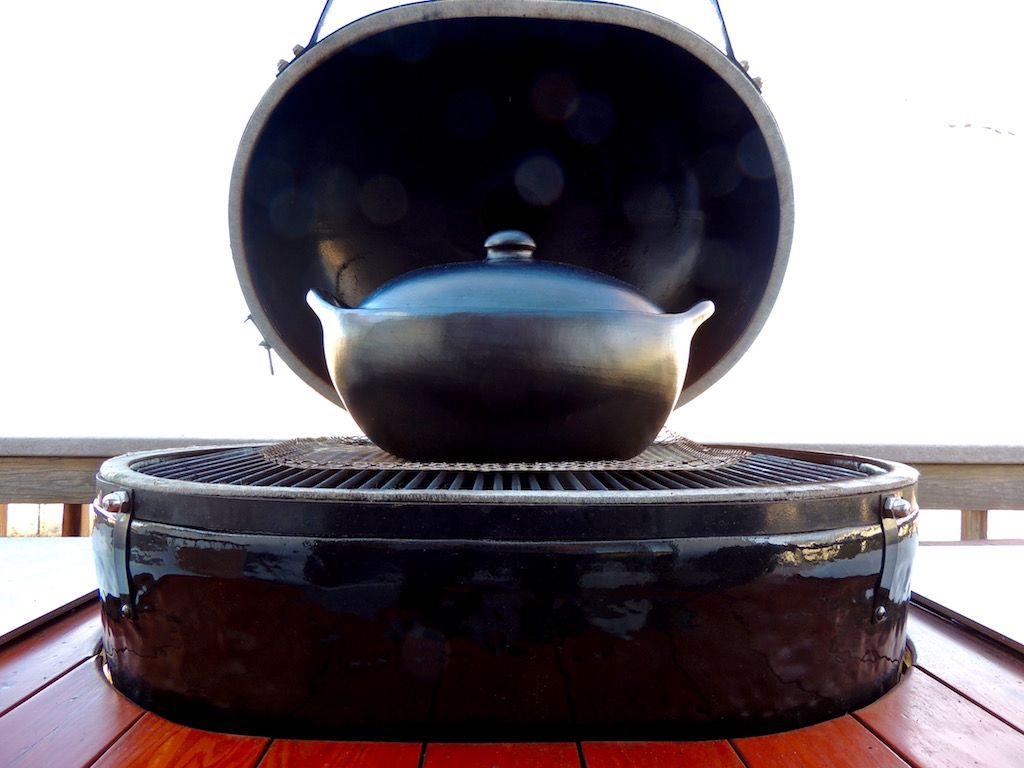
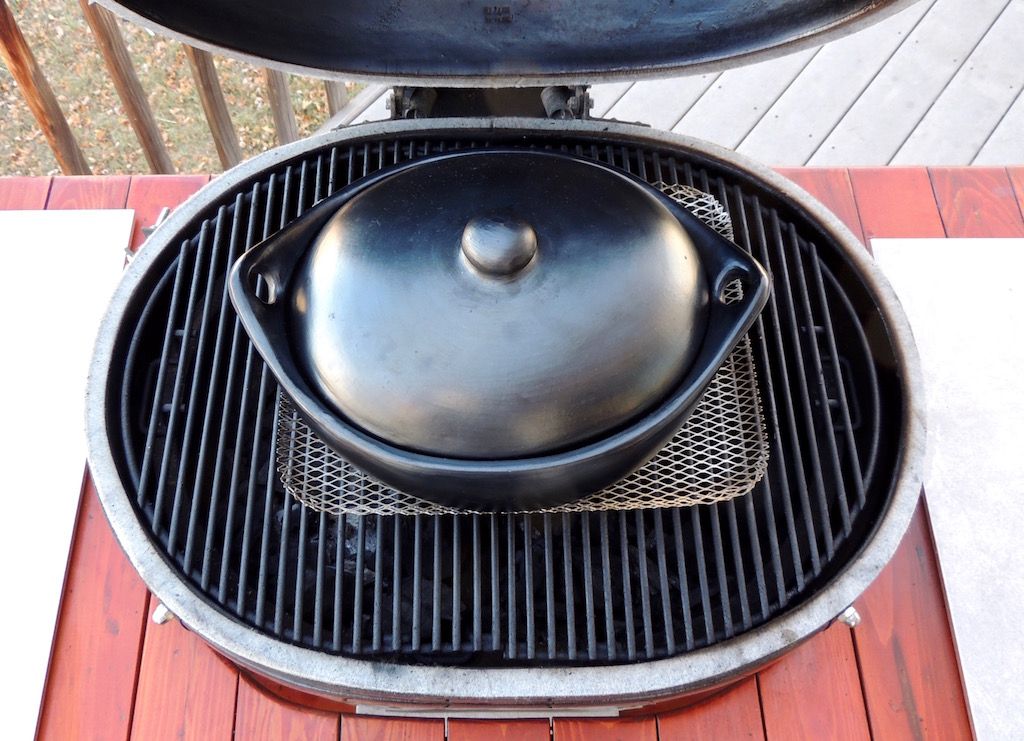

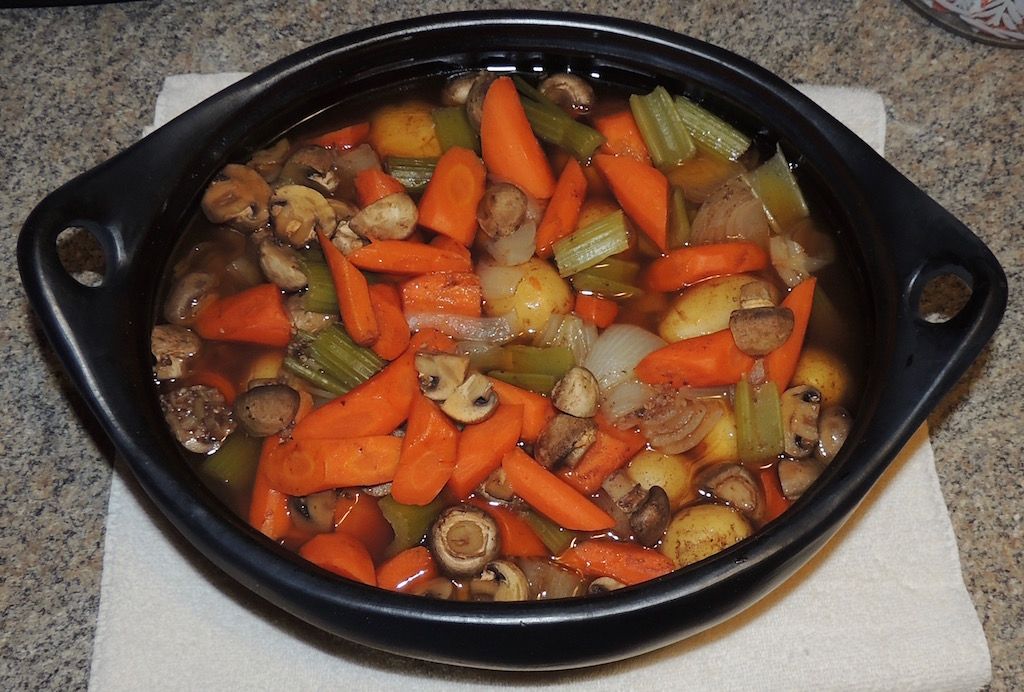

My second pot. An 8 quart soup pot
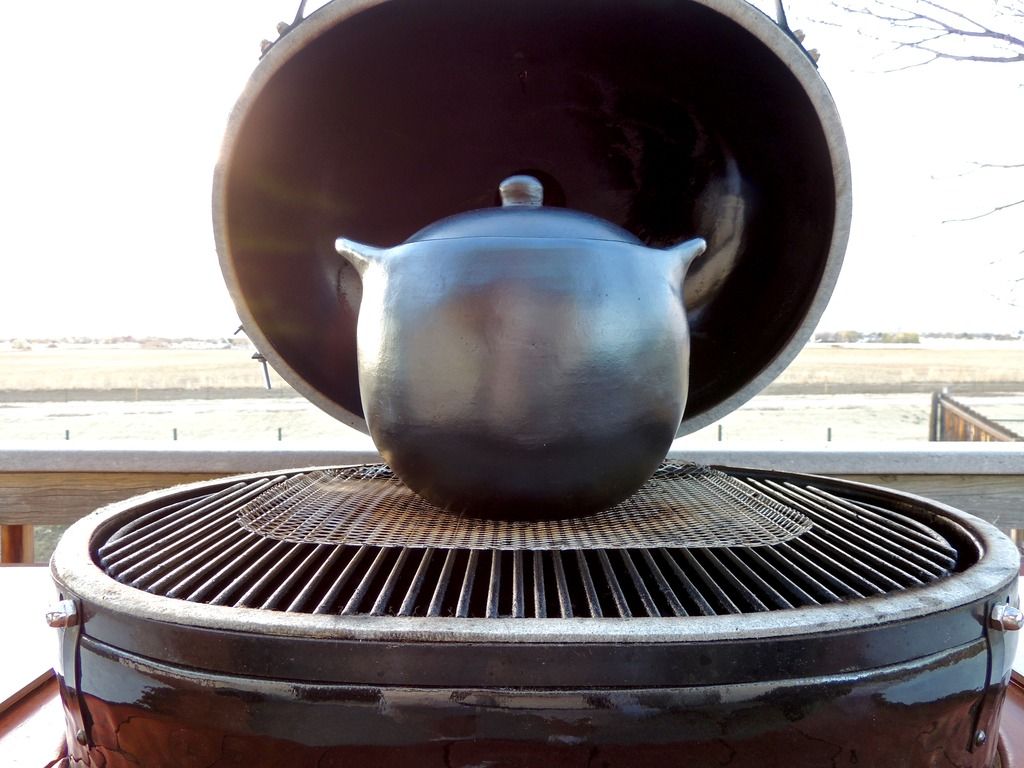
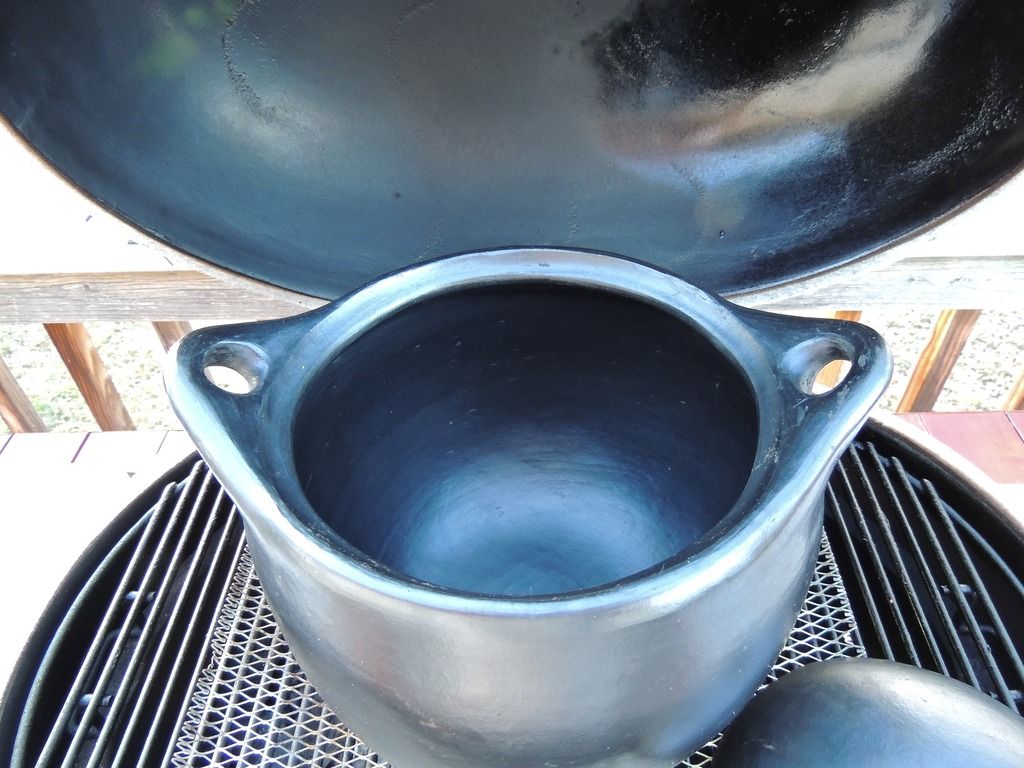
After seasoning with water it should be cured. My method is to saute onion and garlic in some olive oil. This will help seal the pot but it will take 3 or 4 cooks to be fully seasoned.
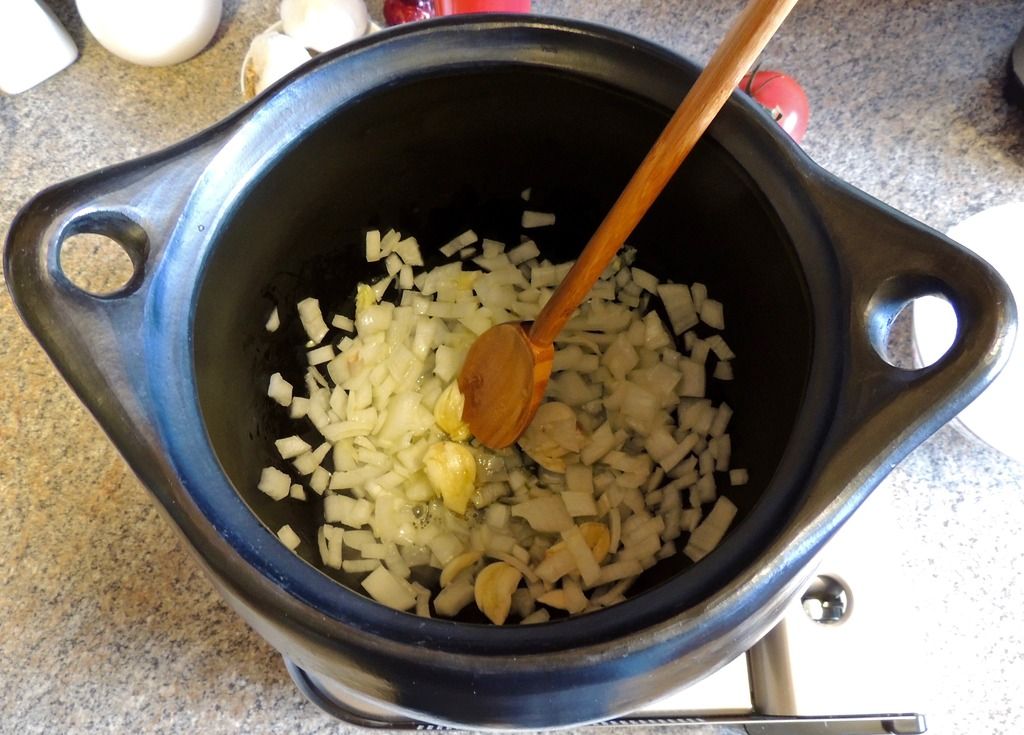
Soup pot on my portable butane stove
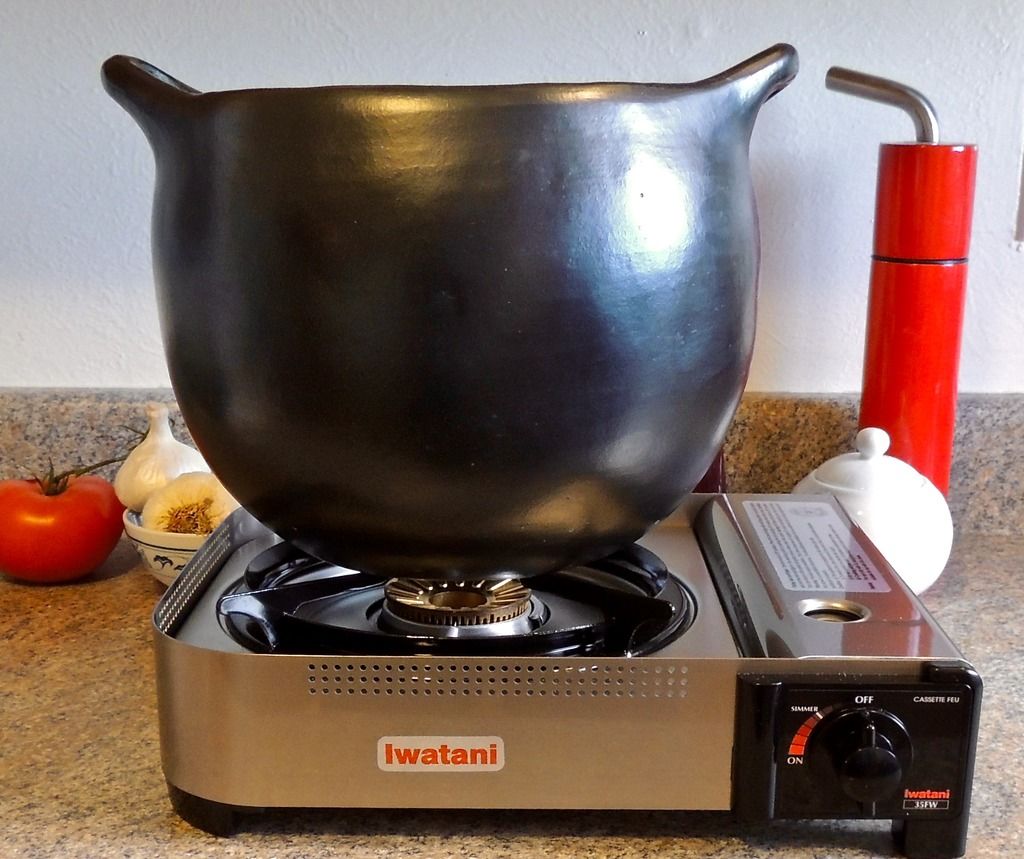
Pozole simmering in the soup pot on a butane flame. Once heated, it takes a surprisingly small amount of energy to keep this pot simmering. It will, in fact, boil when the flame is set at simmer so I had to use a heat diffuser to get the flame low enough for a gentle simmer. A heat diffuser is also required if cooking on a glass or electric coil stove top. Electric cook tops do not produce even heat and there is a danger the clay will crack from thermal shock without a diffuser. A diffuser is a piece of equipment everyone should have anyway. If you've ever burned food on the bottom of a large cast iron or enameled cast iron pot a diffuser will put an end to that.
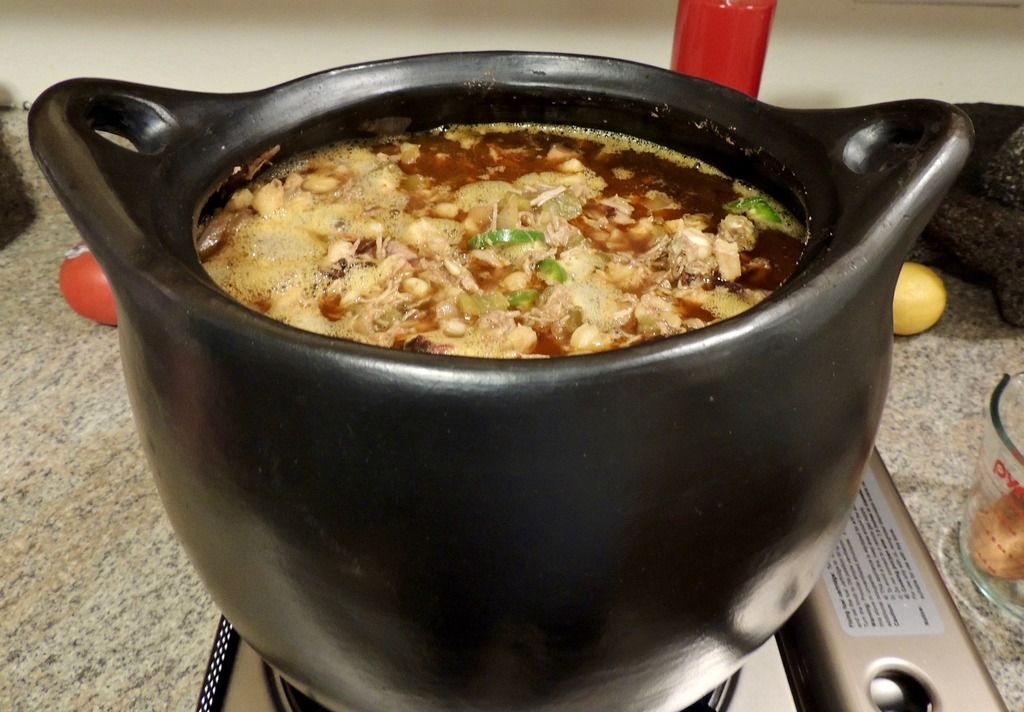
Plated
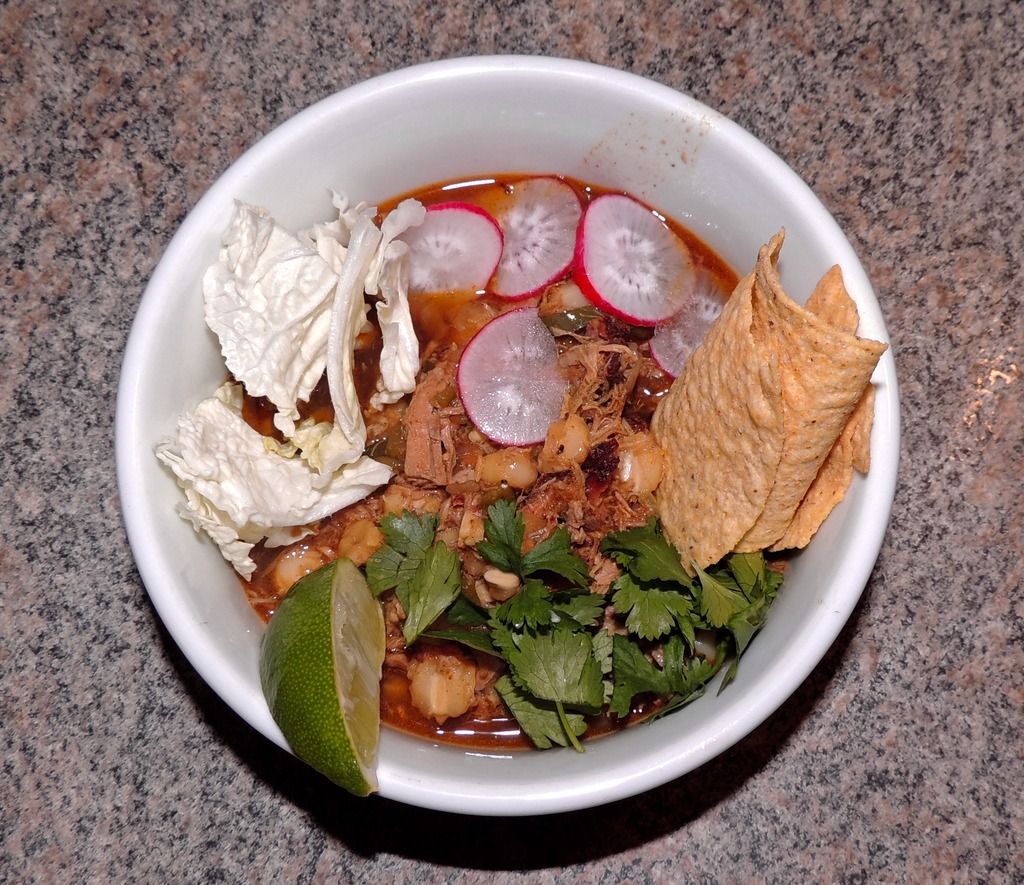



A pre smoked pot roast done braising in the 5 qt Chamba pot over lump charcoal

Plated

My second pot. An 8 quart soup pot

Open top

After seasoning with water it should be cured. My method is to saute onion and garlic in some olive oil. This will help seal the pot but it will take 3 or 4 cooks to be fully seasoned.

Soup pot on my portable butane stove

Pozole simmering in the soup pot on a butane flame. Once heated, it takes a surprisingly small amount of energy to keep this pot simmering. It will, in fact, boil when the flame is set at simmer so I had to use a heat diffuser to get the flame low enough for a gentle simmer. A heat diffuser is also required if cooking on a glass or electric coil stove top. Electric cook tops do not produce even heat and there is a danger the clay will crack from thermal shock without a diffuser. A diffuser is a piece of equipment everyone should have anyway. If you've ever burned food on the bottom of a large cast iron or enameled cast iron pot a diffuser will put an end to that.

Plated

My third La Chamba pot is a 7.5 qt oval. It arrived yesterday. These are pix of an unwashed, unseasoned pot right out of the box.
The markings will disappear after seasoning.
The markings will disappear after seasoning.
I haven't cooked in this large oval yet. It is a bit close to Thanksgiving for me to me making up a large pot of anything but its coming.
I won't bore you with details but it makes a difference who you purchase La Chamba from. There are only two wholesalers of Chamba in the United States and Ancient Cookware has the higher quality pieces. I bought one piece from each vendor for comparison and found It makes a real difference which artisan families vendors buy from.


